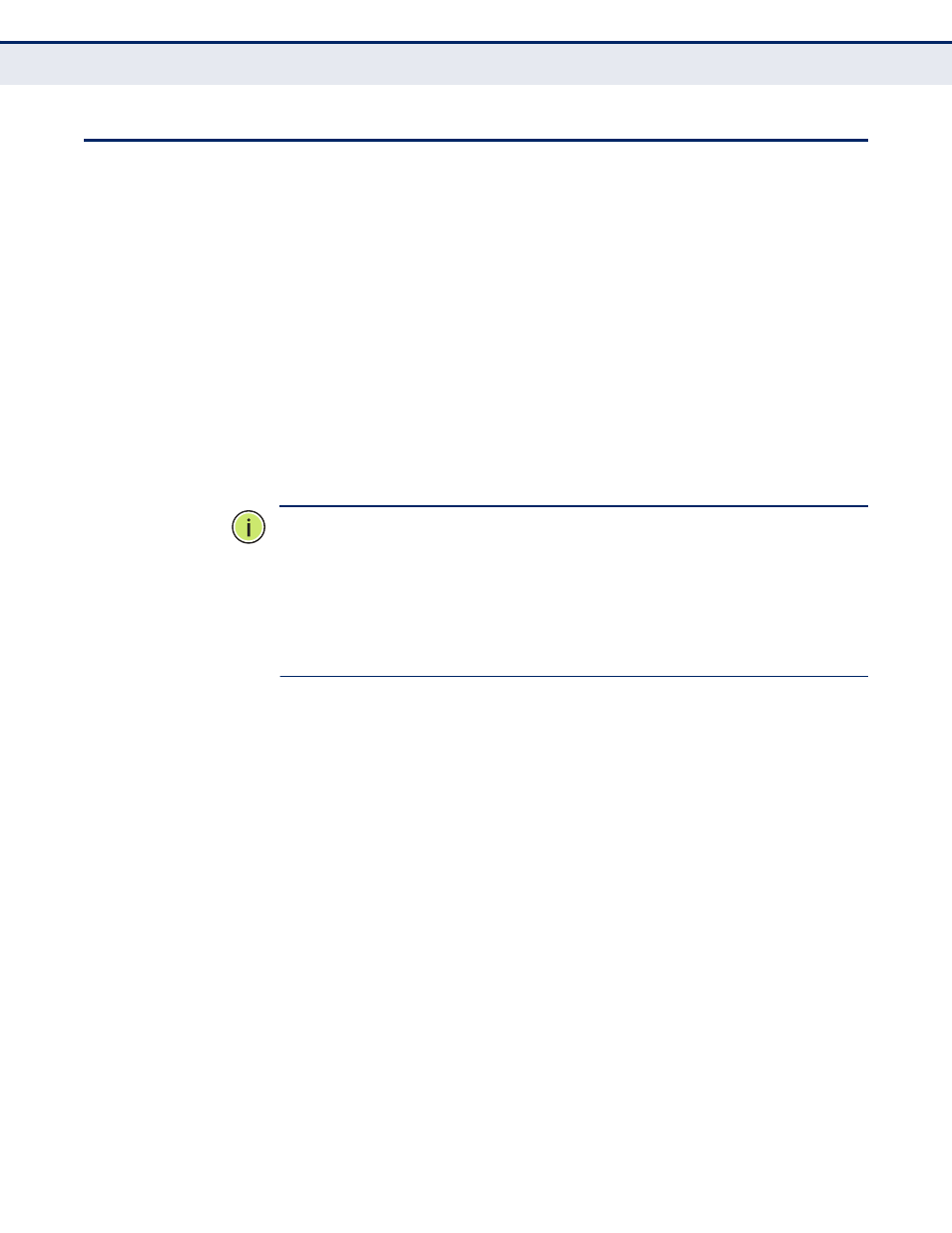Configuring loopback detection, Loopback detection – Microsens MS453490M Management Guide User Manual
Page 196

C
HAPTER
8
| Spanning Tree Algorithm
Configuring Loopback Detection
– 196 –
C
ONFIGURING
L
OOPBACK
D
ETECTION
Use the Spanning Tree > Loopback Detection page to configure loopback
detection on an interface. When loopback detection is enabled and a port
or trunk receives it’s own BPDU, the detection agent drops the loopback
BPDU, sends an SNMP trap, and places the interface in discarding mode.
This loopback state can be released manually or automatically. If the
interface is configured for automatic loopback release, then the port will
only be returned to the forwarding state if one of the following conditions is
satisfied:
◆
The interface receives any other BPDU except for it’s own, or;
◆
The interfaces’s link status changes to link down and then link up again,
or;
◆
The interface ceases to receive it’s own BPDUs in a forward delay
interval.
N
OTE
:
If loopback detection is not enabled and an interface receives it's
own BPDU, then the interface will drop the loopback BPDU according to
IEEE Standard 802.1w-2001 9.3.4 (Note 1).
N
OTE
:
Loopback detection will not be active if Spanning Tree is disabled on
the switch.
N
OTE
:
When configured for manual release mode, then a link down/up
event will not release the port from the discarding state.
CLI R
EFERENCES
◆
"Editing VLAN Groups" on page 786
P
ARAMETERS
These parameters are displayed:
◆
Interface – Displays a list of ports or trunks.
◆
Status – Enables loopback detection on this interface.
(Default: Enabled)
◆
Trap – Enables SNMP trap notification for loopback events on this
interface. (Default: Disabled)
◆
Release Mode – Configures the interface for automatic or manual
loopback release. (Default: Auto)
◆
Release – Allows an interface to be manually released from discard
mode. This is only available if the interface is configured for manual
release mode.